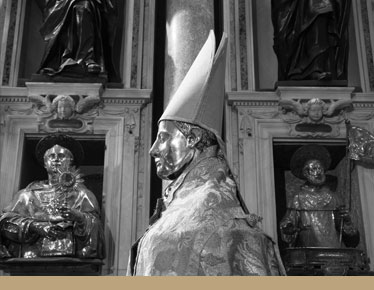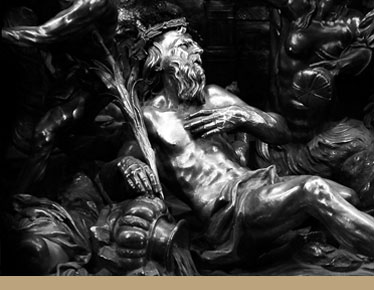The story of the Royal Chapel of the treasure of St. Januarius is rather special. It stands inside the Cathedral of Naples but it does not belong to the curia, rather to the Neapolitans.
Through the monumental gate separating it from the cathedral lies a religious area governed by a lay body, the so-called Deputation. It may seem strange to speak of miracles, faith and secularity and indeed it is, but this is Naples, a town which has succeeded in transforming the cult of St. Januarius into a collective rite.
In 1526 Naples was extenuated by an inexorable series of catastrophes: the plague, the war between the Angevins and the Spanish, and Vesuvius which was tormenting the Neapolitans with eruptions and earthquakes. Exhausted, they asked St. Januarius for help and pledged that in exchange for his grace they would dedicate a matchless chapel to him.
Thus it was that on 13 January 1527 the people of Naples, in the presence of a notary, solemnly pledged themselves to the Saint, asking him to intercede for the end of the plague and signing a fully-fledged contract to this effect. St. Januarius was considered to be physically present via his relics and in the presence of these and another 3 notaries the members of a specially-formed Deputation signed in the name of the town.








